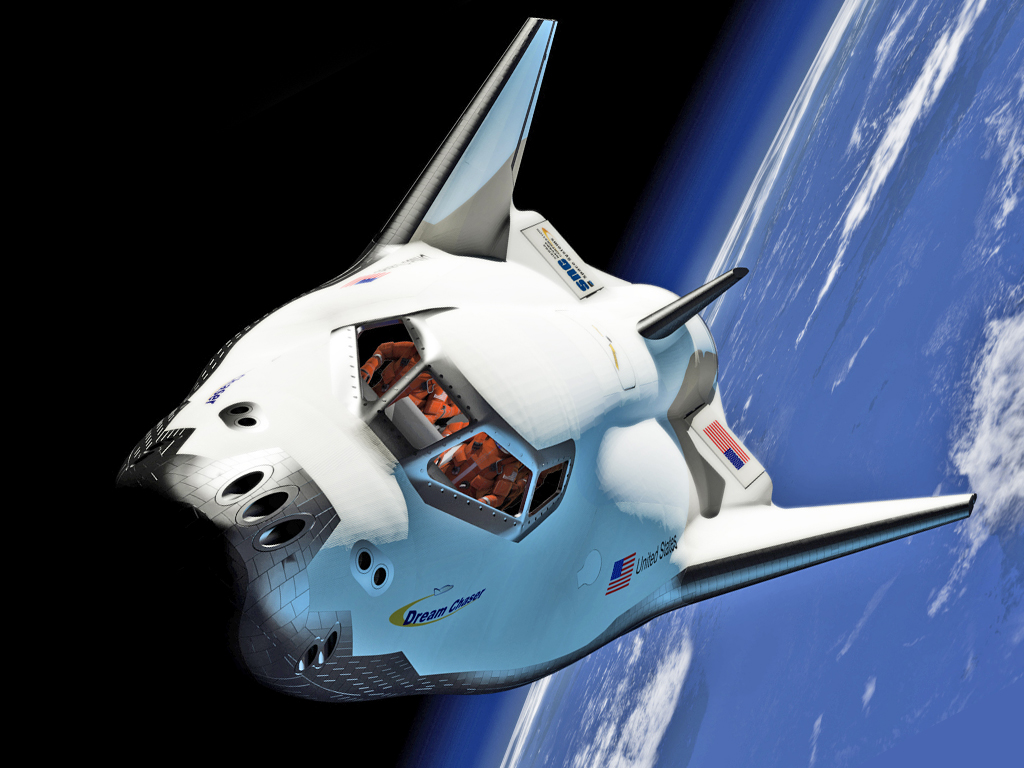Part Two of Two Parts: (Please read Part One first)
In 2013, The German Aerospace Center announced a study to research how the DC technology might be of use to the European space missions. The project was called Dream Chaser for European Utilization (DC4EU). The missions being considered included resupply of the International Space Station and missions to higher orbits.
In early 2014, the European Space Agency (ESA) became a partner on the DC4EU project. Part of the ESA research involved finding out if the DC could make use of ESA avionics and docking technology. Another problem that the ESA investigated had to do with the launch vehicle. They were considering using the European Ariane 5 heavy launch vehicle which has a cargo covering fairing. To fit within the fairing, the DC would have to be reduced slightly in size.
In January of 2014, there was an announcement that the Dream Chaser orbital test vehicle was under contract to be launched on an orbital test flight atop an Atlas V booster from Kennedy Space Center in late 2016. Then, in September of 2014, NASA failed to select the Dream Chaser for the next phase of the Commercial Crewed program due to its "lack of maturity." SCN filed suit against NASA and work by Boeing and SpaceX on crewed space craft under the NASA program was temporarily halted but then restarted by another court ruling. Ultimately, SCN lost its challenge against the NASA contracts for Boeing and SpaceX.
Shortly after losing the NASA contract, SCN announced that it was working with the Stratolaunch Systems air launch system. About the same time, SCN announced the Dream Chaser Global Project to " provide customized access to low Earth orbit to global customers." At the end of 2014, Vulcan Areospace released their design for combining a scaled down Dream Chaser with the Stratolaunch launch system. The system would include the 75% scale Dream Chaser which is twenty two feet long with a eighteen feet wingspan. It will be able to carry two or three crew and have room for scientific instruments.
The European Space Agency has also been seriously considering the full sized Dream Chaser design for European space missions such as low-Earth orbit missions, microgravity research, satellite servicing and active debris removal. OHB System AG, a German space company, has stated that, “The inherent design advantages of the Dream Chaser reusable lifting body spacecraft make it an ideal vehicle for a broad range of space applications,” said Dr. Fritz Merkle, member of the Executive Management Board of OHB AG. “We partnered with SNC to study how the design of the Dream Chaser can be used to advance European interests in space. The study results confirm the viability of using the spacecraft for microgravity science and ADR. DC4EU can benefit the entire international space community with its unique capabilities. We look forward to further maturing our design with SNC as we expand our partnership.” A cooperation agreement between SCN and OHB was renewed in April 2015 for additional two years.
The cargo version of the DC has an expendable cargo section. SCN has proposed the cargo version for possible use in resupply of the ISS. In order to satisfy diverse launch requirements, the cargo version will have foldable wings which will let it be enclosed in a fairing. This version could be launched with either the European Ariane 5 or the U.S. Atlas V. Both the passenger version and the cargo version of the DC are serious contenders in the race to develop commercial space planes.
Dream Chaser:
